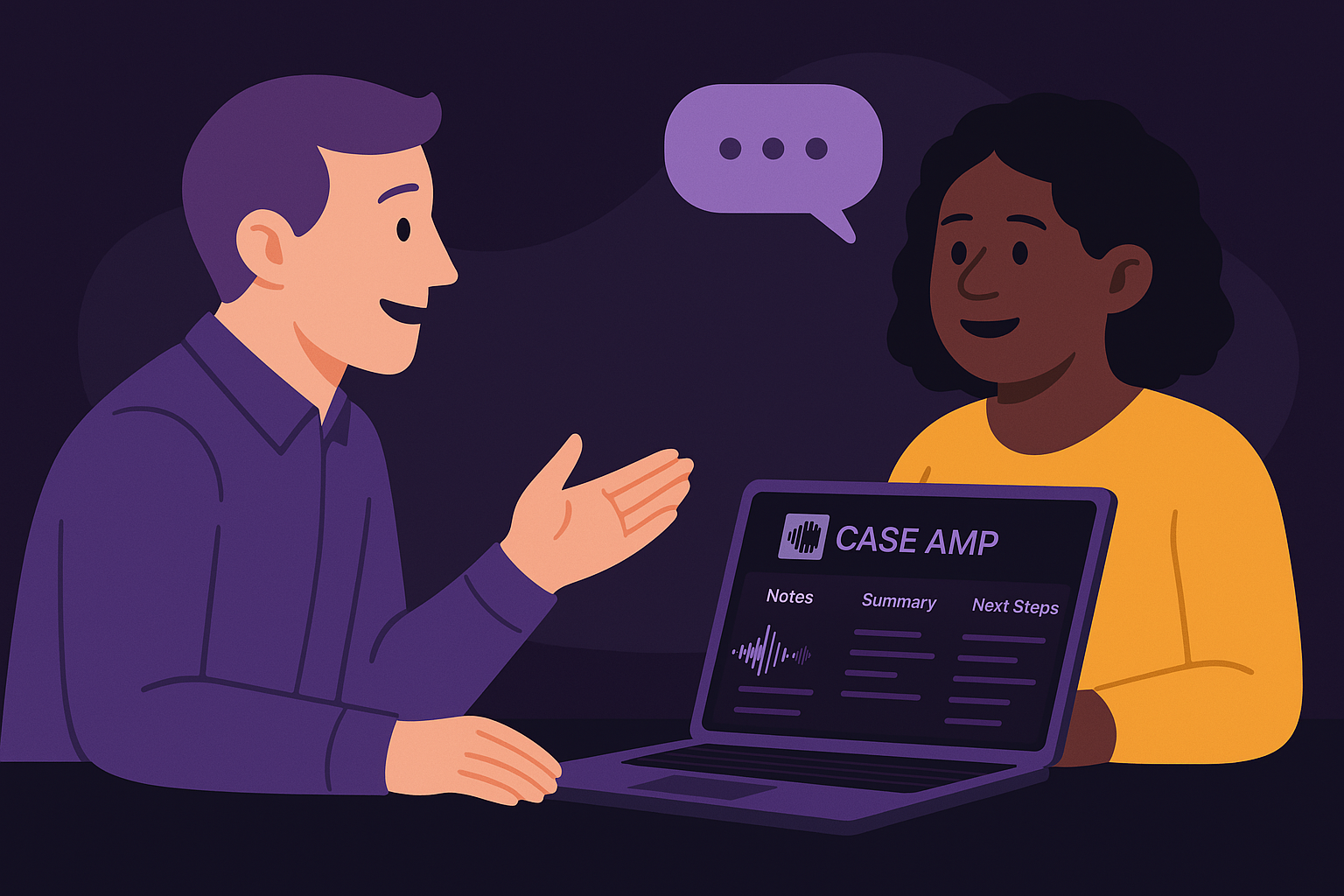AI Interview Assistant

Streamline your interviews and boost efficiency.
Live Note Taking:
Automatically capture essential data during interviews for fast form population and qualification.Real-Time Analysis:
Receive immediate, trauma-aware question suggestions based on conversation insights.Standardized Summaries:
Get a consistent, concise recap featuring key insights, client concerns, actions, and next steps.Smart Program Suggestions:
Leverage current and past data to match clients with the right programs.Editable Insights:
Review and adjust AI-generated notes to ensure complete accuracy.Enhanced Client Engagement:
Free up caseworkers to focus on conversations, not paperwork.Seamless Integration:
Sync interview data effortlessly with your existing case management systems.Flexible Data Retention:
Choose how to store audio, transcriptions, or both to meet your privacy and compliance needs.
Experience efficient, consistent, and client-focused interviews with Case Amplify's AI Interview Feature.